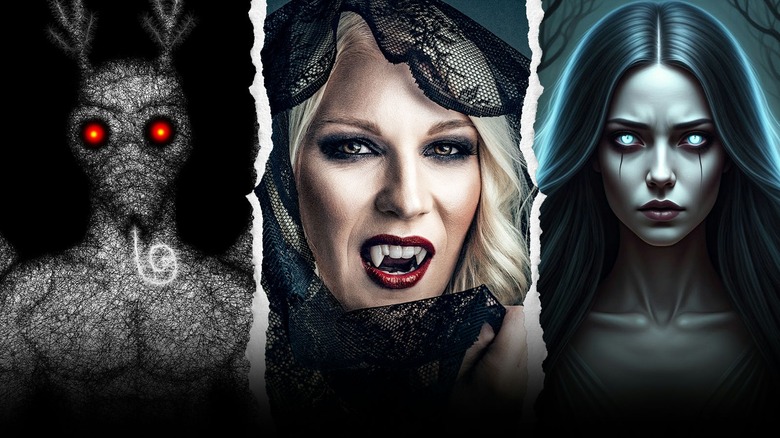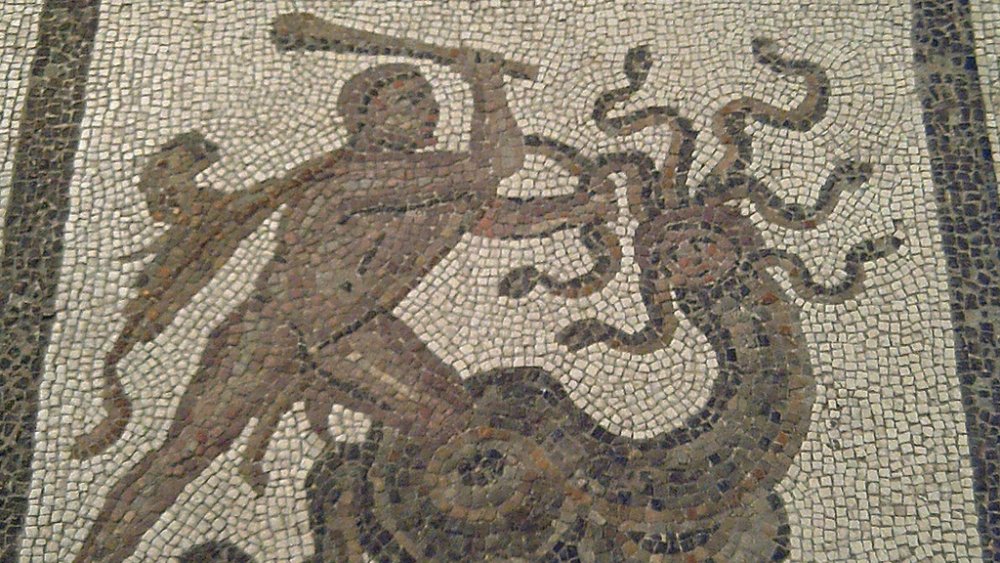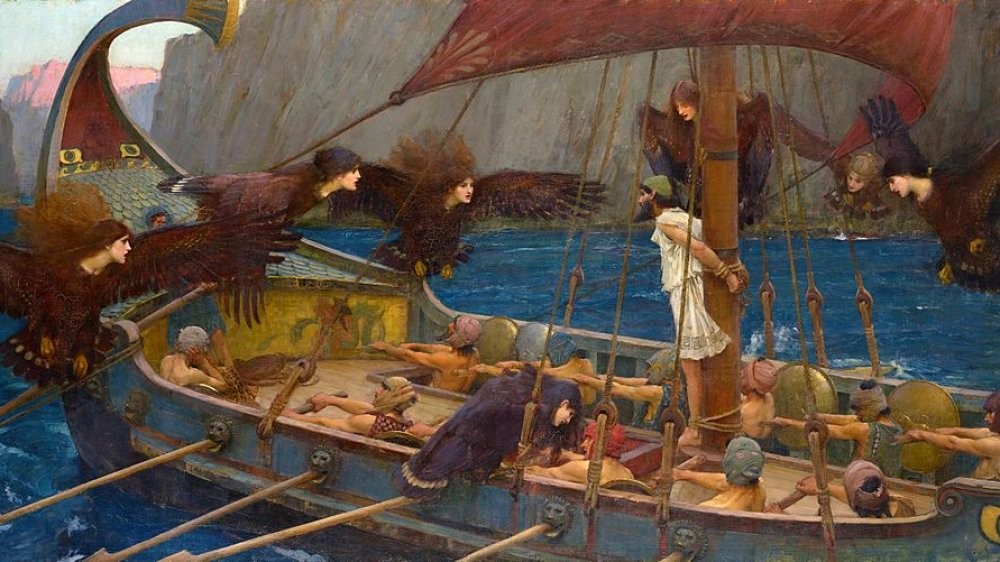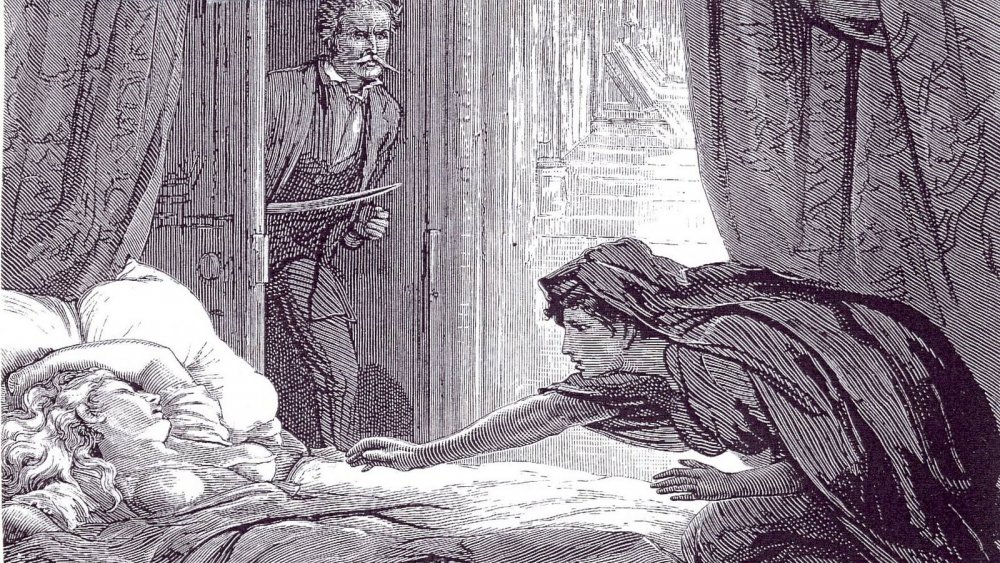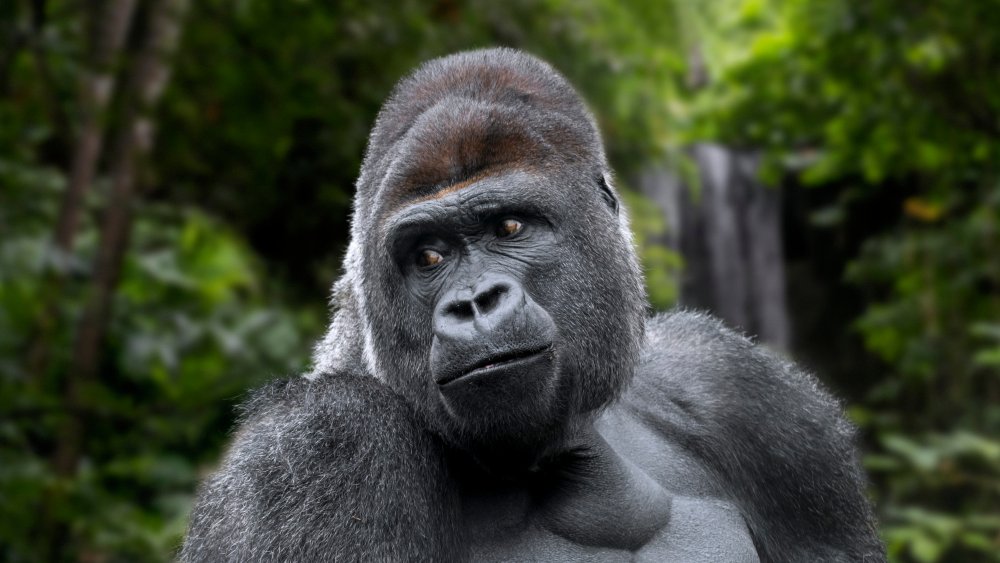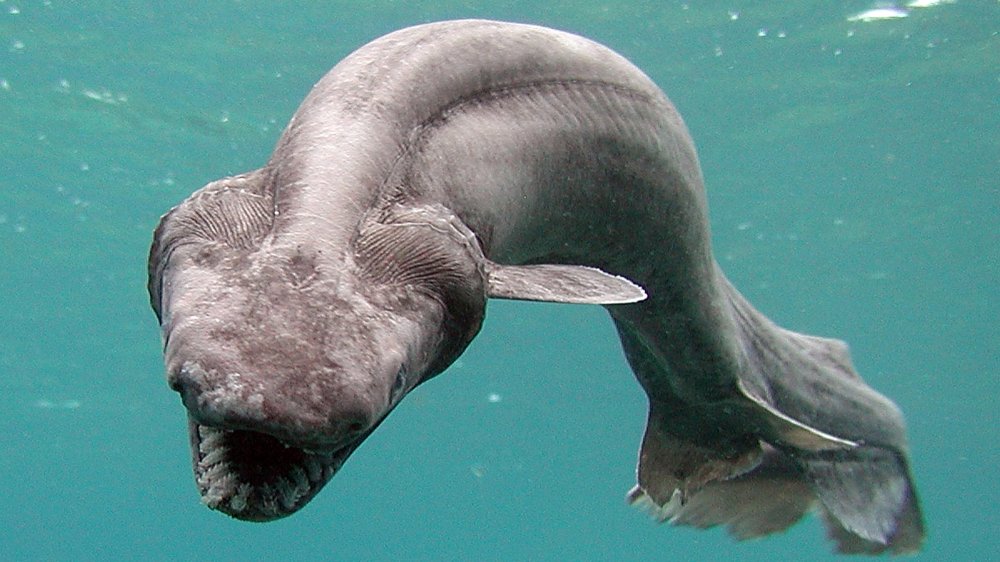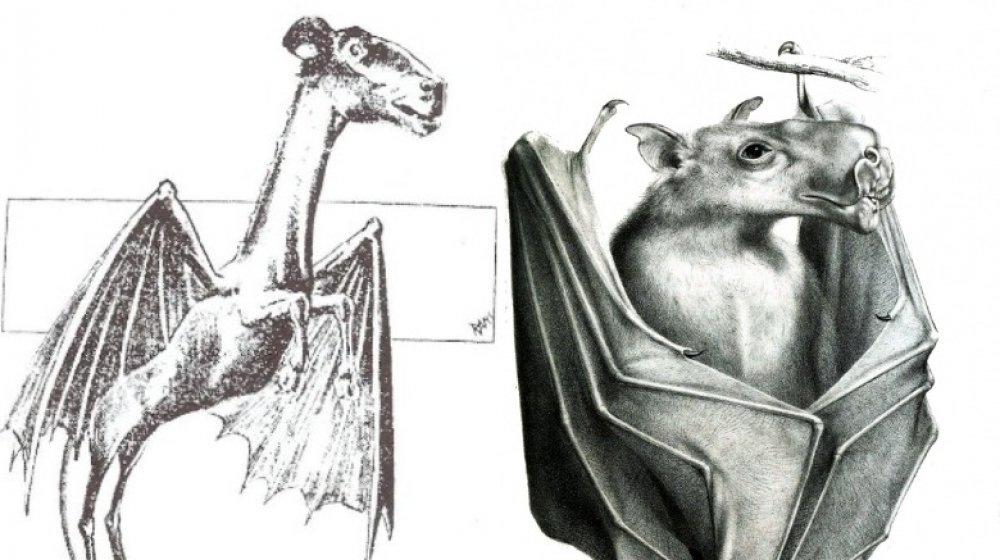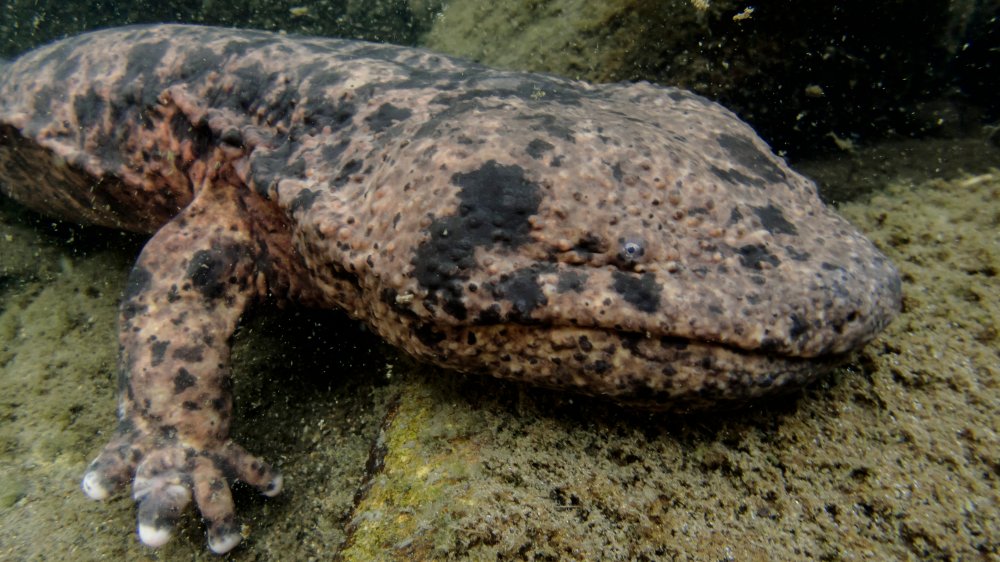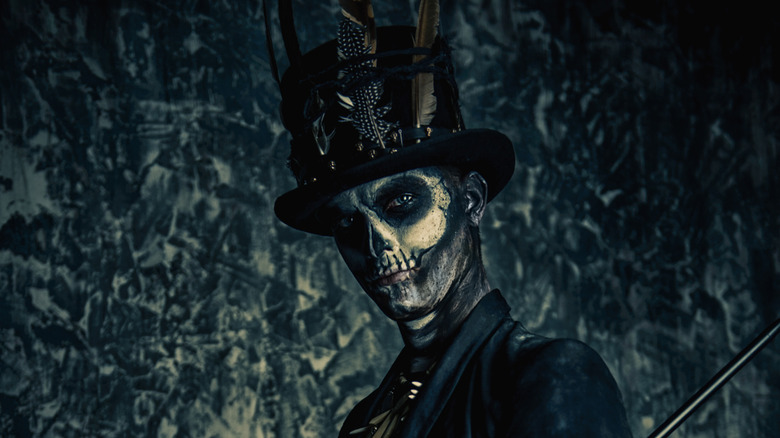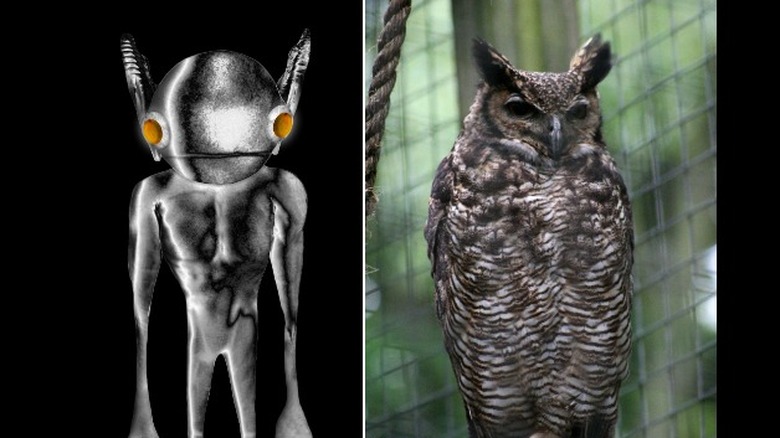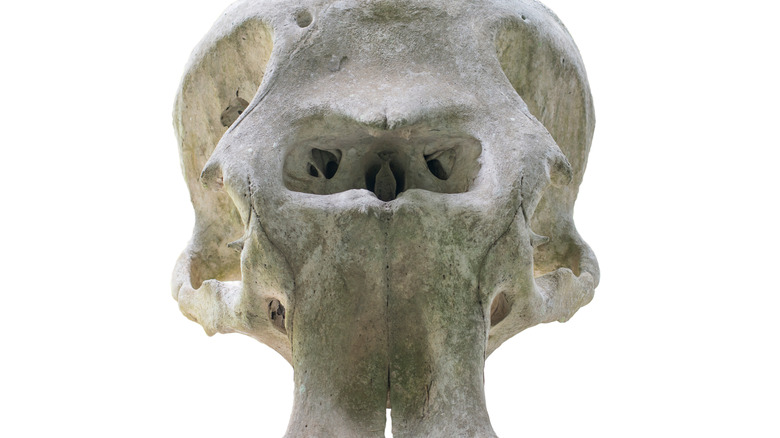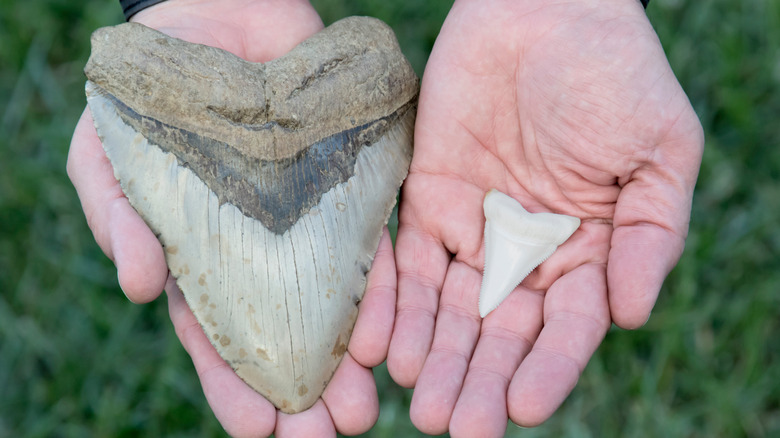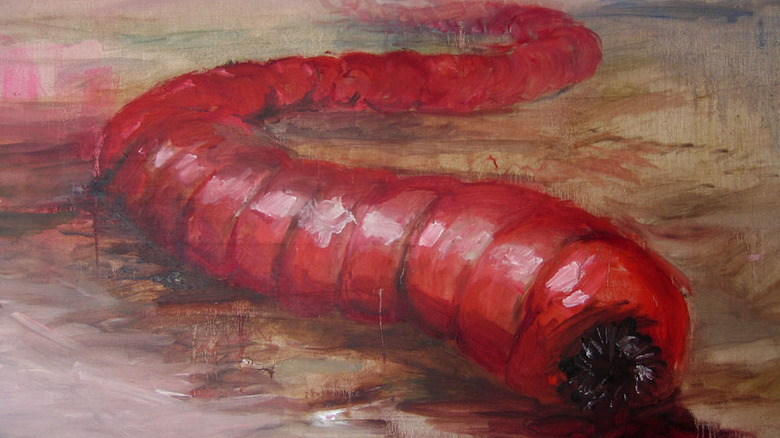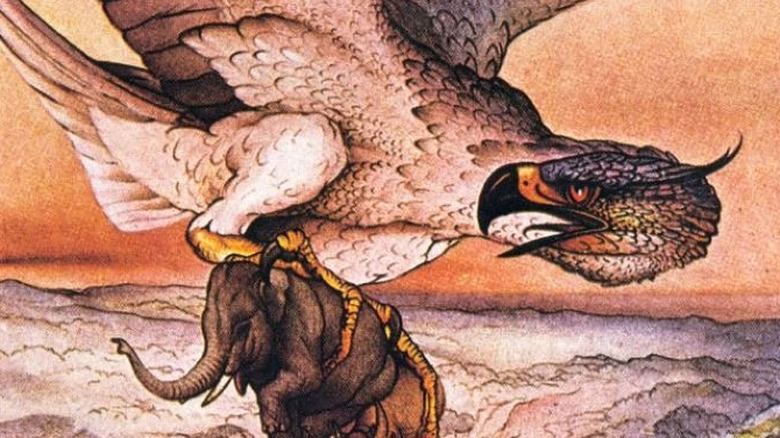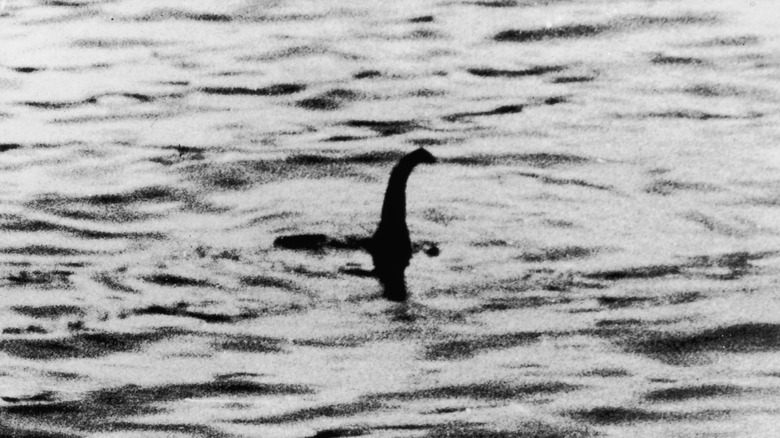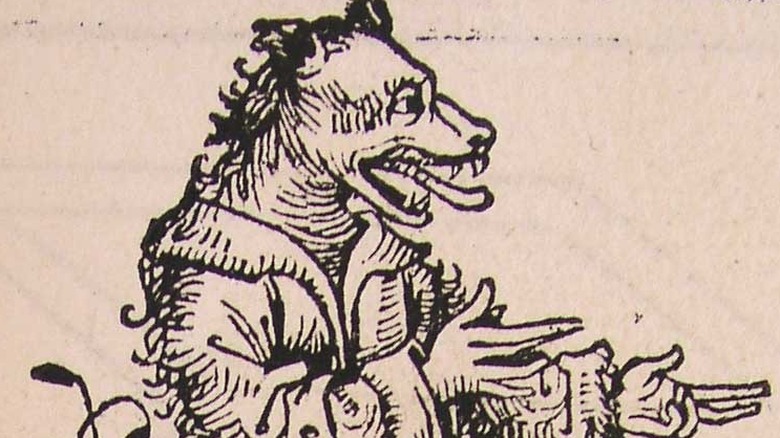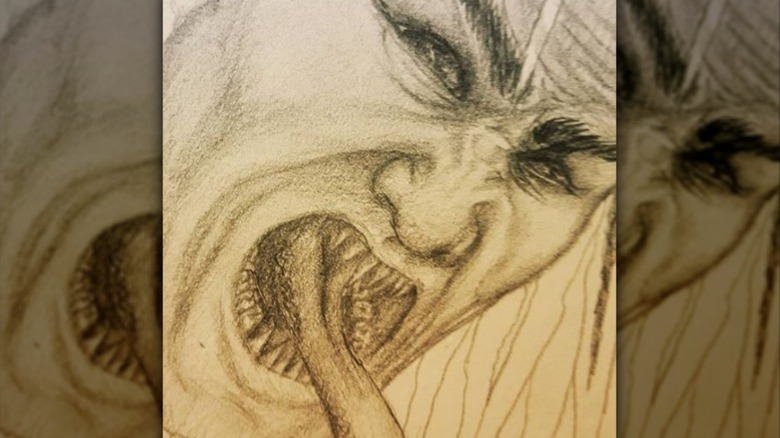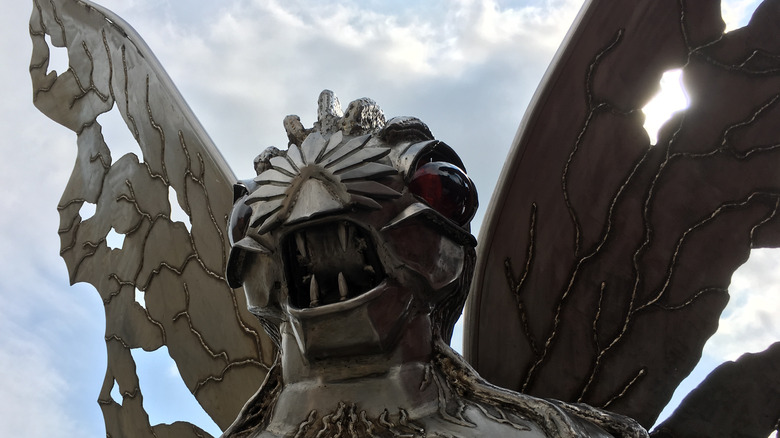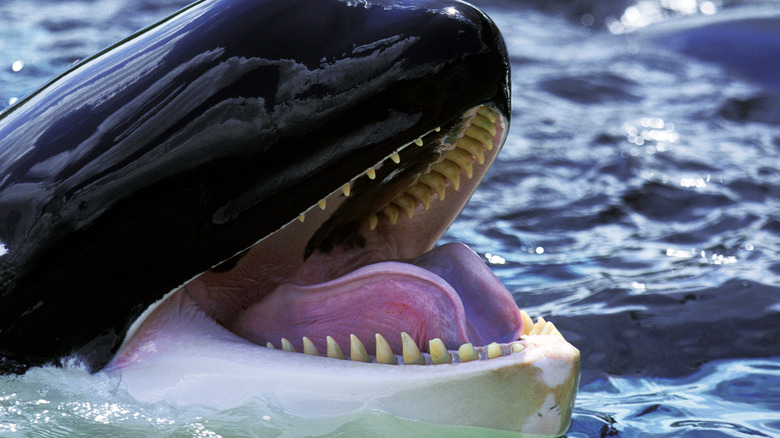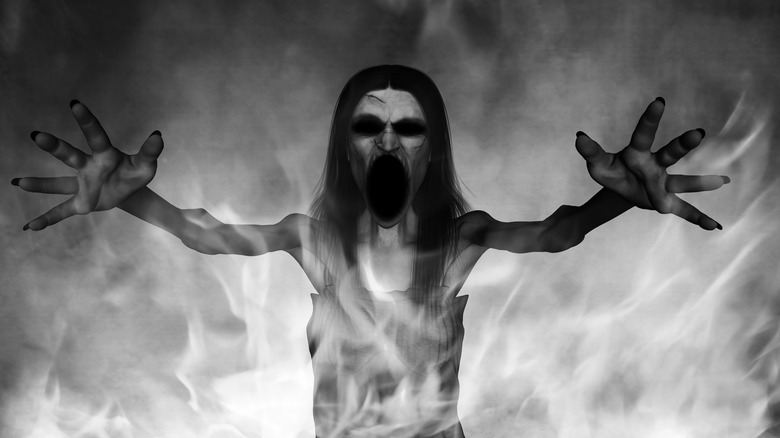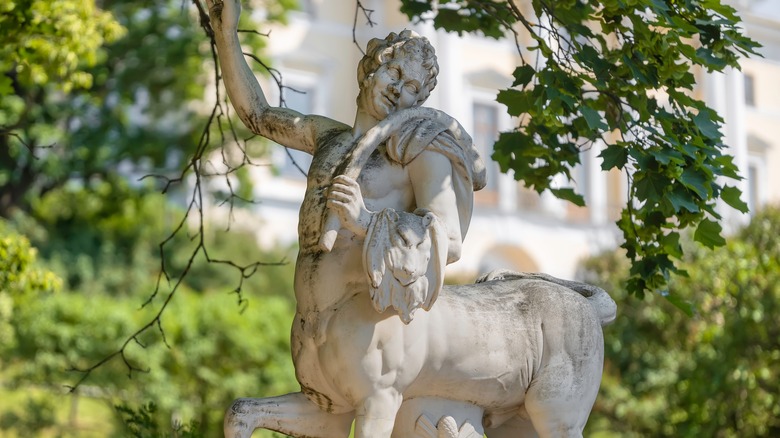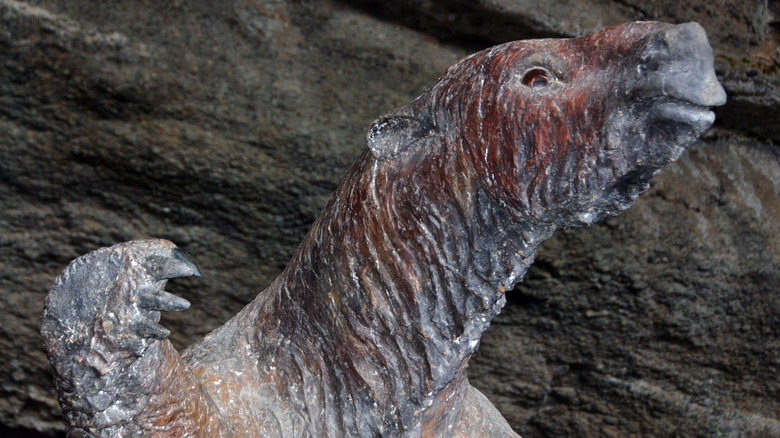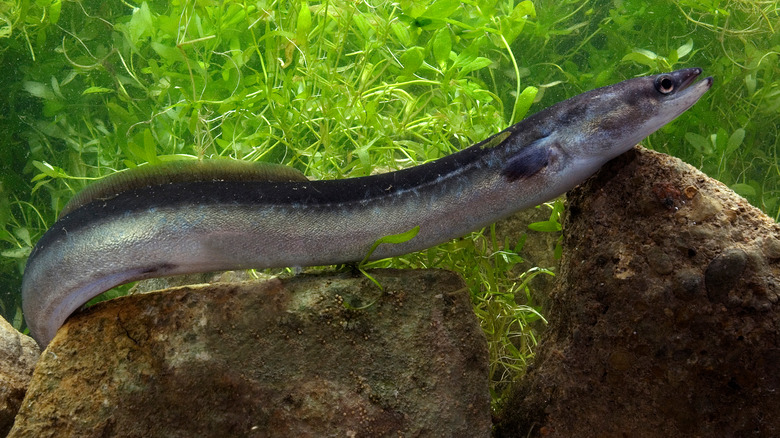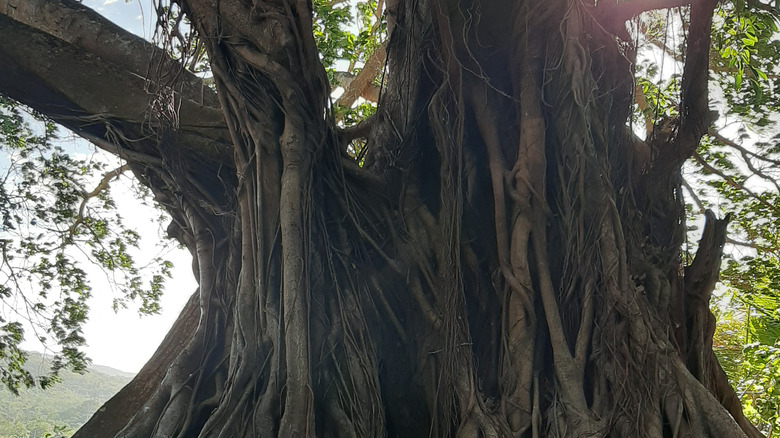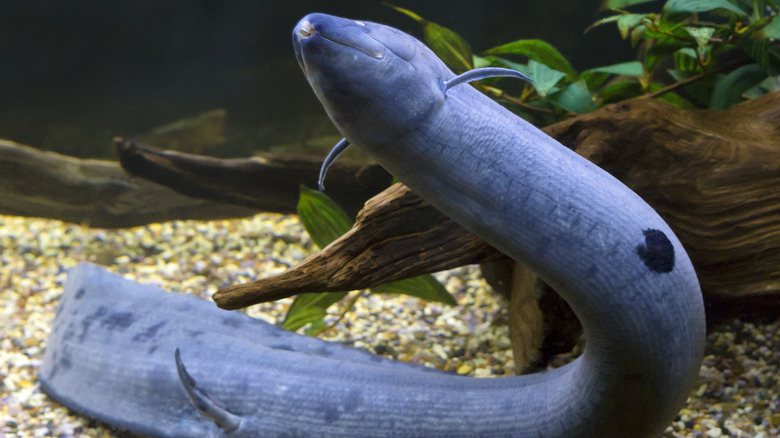Mythical Monsters That Might Have Actually Existed
History is riddled with stories of monsters that terrified our ancestors. Every culture has tales or myths about beasts or monsters of some sort that attacked unsuspecting humans, sometimes with fatal results. Many of these stories were passed down as a form of warning, much like the urban legends that so often make the rounds on social media.
But monsters aren't real, right? After all, none of those things were ever proven to exist, and as time and science march on, mythical monsters have largely been disregarded in favor of actual human monsters, of which there seems to be no shortage.
So where did these monster myths come from? Certainly, some of them were purely metaphorical, meant to convey warnings about more banal dangers. But researchers have discovered that there are at least some mythical monsters that may have been based on disturbing truths, which just seemed a lot scarier before we began to understand them.
Hydras
In Greek mythology, the Lernaean Hydra was a multi-headed snake-beast confronted by Heracles, son of Zeus. Not only was the hydra fearsome, but Heracles also found it incredibly hard to defeat because each of the hydra's heads he lopped off quickly grew back. It wasn't until Iolaus, Heracles' nephew and occasional sidekick, got the idea to burn the stumps after the hydra was decapitated that Heracles was finally able to slay the monster.
While there weren't really any 50-headed serpent beasts in ancient Greece, the concept of a hydra might have been based on something much less fantastical, but still quite remarkable. Ordinary snakes are common all over the world, and like many other animals, they can occasionally suffer from a condition known as polycephaly, wherein the snake can have two or even three heads, but can potentially otherwise be completely healthy.
While polycephalic snakes (or any other animals) are very rare, it would only take one or two sightings of one for it to turn into a telephone game of legends and myths. Modern biologists now consider snakes with polycephaly to be a very likely origin for the hydra myth, before artistic license turned them into monsters with dozens of heads. Regeneration among reptiles is also not unheard of, which might have inspired the detail that their heads grew back, too.
Sirens
History and mythology are full of aquatic humanoids, half-fish and half-human. Mermaids are generally considered to be beautiful fish-women who largely avoid humankind but are otherwise not dangerous. Not so for their mer-cousins, the sirens, though.
Most famously seen in Homer's "The Odyssey," sirens are more birdlike, often being depicted as having wings or even beaks, in addition to fish and human features. Sirens are said to sing a deadly but enchanting song that draws sailors into the depths. Odysseus' crew is able to resist by blocking their ears with wax and, in the case of Odysseus himself, being tied to the mast without the wax so he could hear the song (he was just into courting death, apparently).
What might have inspired these legends is something we're pretty familiar with now, though. Modern researchers think ancient sailors probably saw manatees or dugongs, both of which have large arm-like flippers and can turn their head side-to-side, like humans. From a distance, these creatures might look more human-like than they do close-up, and thanks to poor nutrition and mental strain from isolation, you also can't rule out that those who saw sirens or mermaids might have hallucinated a few extra details.
Vampires
Today, vampires have great PR and are depicted as slick, smart creatures, drinking blood from the living and hiding from humanity's watchful eye. But let us not forget classical stories of vampires. Typically, these involved lots of people dying all at once and someone blaming the deaths on a recently deceased person. That person is then exhumed, and inside the coffin they find the deceased's hair and nails have grown, they have blood on their mouth or chin, and there are scratches inside of the coffin lid.
These kinds of stories are part and parcel of vampire legends, and several common pre-Dracula myths hit many or all of these points. But modern historians think what actually went on was much simpler. Disease was very poorly misunderstood, as was death. Remember that disease and how it spreads were largely unknown until recent times; illnesses like cholera could quickly wipe out an entire town and leave them scrambling to figure out why.
On top of that, premature burial wasn't terribly uncommon and natural decay was a mystery. It's likely many supposed vampires were either actually people mistakenly buried alive or dead bodies undergoing ordinary decay, which were misinterpreted as signs of vampirism. These could have included the body purging fluids through its mouth, which could be mistaken for blood, or growing hair, which is actually due to the skin shrinking and exposing more of the root.
Giant apes
From King Kong to Donkey Kong, giant apes are a big part of our culture. While modern stories about large primates focus mainly on Bigfoot, Sasquatch, the yeti, and so on, giant ape myths were actually fairly common in the past, too, albeit not as sensationalized. Instead of hairy, bipedal creatures with human-like features, giant ape myths were just that: regular apes, only bigger.
These myths were especially common in places that actually have apes, such as the jungles of Africa. Throughout centuries of exploration, stories emerged of travelers encountering remarkably strong apes the size of a human or larger. African tribes had stories spanning back centuries about them. No evidence ever came forth regarding these giant apes, though, and so they were largely regarded as a myth or even a hoax.
It wasn't until 1847 that the truth was revealed: Giant apes were actually real, and they were soon officially named as gorillas. Before that, science had no idea gorillas were even a thing. Some of the legends about them were exaggerated, but there really was a species of large ape that western science just plain didn't know about.
Sea serpents
Every seafaring culture has stories of massive sea serpents, thrashing through the water and occasionally threatening ships and sailors with huge, terrifying teeth. Norse mythology had one so large, called Jörmungandr, that it encircled the whole world. In Judaism and Christianity, a massive beast named Leviathan stalks the seas. Even more modern legends, such as those told by pirates, included these huge monsters.
While the natural conclusion might be to assume these legends originated from a misidentification of an eel of some kind, in truth, there's been something even scarier in the water for thousands of years. One of the oldest living shark species, the frilled shark (pictured) calls the deep sea its home, and like many deep sea animals, it looks super weird. Without the long fins we typically associate with sharks, the frilled shark wriggles through the sea and has multiple sets of barbed teeth, perfect for tearing things to shreds. Sightings outside of the deep sea are incredibly rare. The frilled shark is so old it's referred to as a living fossil, since the species has barely changed in 80 million years.
Another possible culprit is the frilled shark's fellow deep sea denizen, the goblin shark. While not as serpent-looking as the frilled shark, the goblin shark is utterly terrifying, appearing like something out of the "Aliens" universe. It'd be shocking if our ancestors didn't tell scary stories about them.
The Jersey Devil
In the Pine Barrens of New Jersey, legends tell of the Jersey Devil. According to the most common myth, the creature was the 13th child of a woman named Mrs. Leeds, who was so sick of having kids that she cursed the child and ended up giving birth to a beast with bat wings and hooves. While the story is nearly 300 years old, it really only became well-known in the 20th century, especially outside of New Jersey.
While sightings of the Jersey Devil do vary a bit, a few features are common: long, slender legs, bat wings, and a long head. While it's not all that devilish, there is a pretty common animal in the area that resembles the creature: the sandhill crane. It has slender legs, large wings, and a long head. It's not exactly terrifying, but it is a pretty decent fit.
Some rumors point to a much more interesting source, though: the hammerhead bat. Not only does it have the same features, but it also has bat wings and its head shape is almost identical to the most common depictions of the Jersey Devil. There's just one problem. The hammerhead bat is native to Africa, not North America. It's not impossible hammerhead bats took up residence in the isolated Pine Barrens at some point, but this has yet to be proven.
Kappa
Among the many terrifying entries in Japanese folklore that will haunt your dreams, there are humanoid, amphibious (often depicted as turtle-like) creatures about the size of a child known as the kappa. They pop up a lot in Japanese mythology, but haven't really made their way across the ocean so much. Still, they do show up a little in the "Harry Potter" and "Fantastic Beasts" movie series, and plenty of anime and video games have nods and references to them.
Kappa are mischievous gremlins that live in rivers and streams. They love cucumbers and, oddly, sumo wrestling. They usually pull mean-spirited yet harmless pranks, but they can also sometimes attack or even drown unsuspecting humans. One interesting feature is that they're usually shown to have a flat or bowl-shaped head which collects water. If that water dries up or spills while they're on the surface, the kappa is severely weakened.
It is thought that many of these legends were based on sightings of a real animal, the Japanese giant salamander (pictured). It's an amphibious creature, quite large, and it does have a flat head, which may have been where the detail about kappa having a flat or indented head came from. The salamanders are incredibly rare and endangered nowadays. They are also protected by the Japanese government, so if you find one, maybe avoid sumo wrestling with it.
Voodoo zombies
Before the flesh-eating zombies of "The Walking Dead" and George Romero movies, there existed the concept of voodoo zombies: humans raised from the dead and forced to do the bidding of a voodoo practitioner. While these particular zombies didn't necessarily eat flesh, they were undead, shambling monsters that may or may not decay like their modern zombie brethren, depending on the source.
Legends about these zombies went through centuries, and it wasn't uncommon to hear of a nefarious person raising the bodies of the recently deceased and enslaving them. In fact, there were occasionally tales of former zombies returning to a more human-like state, as if they just stopped being dead after a while.
In the 1980s, researcher Wade Davis headed to Haiti to look into this for himself. There, he discovered what may have been the concoction that made real-life zombies. According to Davis (via Harper's Magazine), the deceased weren't dead at all. Instead, the unsuspecting victim was dosed with tetrodotoxin, found in the puffer fish, which caused a paralysis not unlike death that wore off in a few days. Davis came to believe victims were given this drug to make them appear to die, and then after several days, their body was retrieved and forced into servitude, where they would be given powerful psychoactive drugs on a regular basis to keep them pliable and obedient.
The wendigo
The Algonquian, native to the United States and Canada, have a legend of a beast called the wendigo. The legends vary: Sometimes the wendigo is a monster that eats human flesh, but in other cases the wendigo isn't a physical being, but an evil spirit which possesses humans, causing them to become cannibals and perform other monstrous deeds.
You might recall the story, "The Wendigo," from Alvin Schwartz's "Scary Stories to Tell in the Dark" from when you were a kid. In it, an unnamed hunter and his native guide, DeFago, encounter a mysterious voice carried on the wind, which sweeps DeFago away. This is just one of many appearances of the wendigo in pop culture, and it is a bit toned down since there's no cannibalism, but it gives you an idea of just how spooky these tales can be.
Some psychiatrists think there's a less paranormal yet still creepy explanation: "Wendigo psychosis," which is described as a cultural syndrome specific to First Nations people. Effectively, the psychosis manifests as a belief that one has been inhabited by the wendigo, which causes the afflicted to suddenly crave human flesh. While the myth of the wendigo started out as just a story, those stories were so effective that wendigos became a self-fulfilling prophecy; someone could become a wendigo simply by being afraid they were a wendigo.
Little green men
On August 21, 1955, the town of Hopkinsville, Kentucky, was visited by unknown creatures. According to reports, 11 different people, mostly members of a family named Sutton, claimed to see creatures that looked almost like goblins. They stood about 3 feet tall with long arms that reached nearly to their feet, and with large, pointy ears sticking out from their bulbous heads.
The Sutton family's friend, Billy Ray Taylor, claimed the creatures arrived in a small, metallic craft that dropped straight out of the air. The Suttons initially laughed at Taylor's story, but an hour later, their dog began barking. Upon going outside, the family and Taylor saw one of the creatures. The men present grabbed rifles and shot at the creatures, but they seemed to be impervious to bullets. After several hours, during which time the creatures peeked their heads into the house's windows and stood on the roof, the Suttons escaped and drove to the police station. While police assumed the Suttons had been dipping into some strong moonshine, it turned out they didn't drink, and no alcohol was found on the premises. Authorities found shell casings, but nothing else.
Some have proposed a much more down-to-earth explanation than aliens, though: The creatures were actually great horned owls, which have a pretty striking resemblance to the drawings that the police made.
Cyclops
Greek myths feature several cyclopes, such as the one encountered in "The Odyssey," Polyphemus. Like most others of his species, Polyphemus is a giant, one-eyed creature who happens to not be terribly smart. Odysseus is able to trick him (and later blind him) without too much effort by getting him drunk and telling Polyphemus his name is "Nobody." This sets up the greatest dad joke in antiquity when Polyphemus tries to tell his fellow cyclopes that "Nobody" attacked him.
Oddly, many cyclops legends are set on or around the isle of Crete. This might seem inexplicable without the historical context that Crete was once home to a species of dwarf mammoth that was typically much smaller than an adult human.
What does that have to do with cyclopes? Well, historians suspect the myths originated from Greek explorers finding the skulls of these tiny behemoths. An elephant-mammoth skull has a large, central socket. It's for their trunks, not their eyes, but to someone who had never seen one before, it might look to be an oversized humanoid head with a central eye socket. So, working backward from these skulls, the ancient Greeks imagined they belonged to 20-foot-tall monsters with a single eye and ran with it from there.
Giant sharks
The ancient Mayans have a creation myth where Cipactli, a giant sea monster often depicted with a single, huge tooth, was killed by Tezcatlipoca, and then he and Quetzalcoatl made the Earth from the monster's body. The Mayans weren't the only ones with stories of sea monsters with giant teeth, either. Many cultures have even created myths and legends about enormous, oversized sharks, far bigger than any seen today.
While there are some pretty large sharks out there, such as the whale shark, these mythological sharks are much bigger. Could there be some unknown, massive shark species out there that terrified our ancestors? Potentially yes, since there's plenty in the ocean that we don't know about. But what's more likely is these stories were inspired by the fossils of real sharks that went extinct long before humankind came along.
The megalodon, an ancient ancestor of modern sharks, was absolutely enormous, around 50 feet long. While megalodons went extinct for various reasons over 2.5 million years ago, their fossils aren't exceptionally rare, and it seems the ancient Mayans found some of these, as they've been discovered in their caches and may have inspired their legends about Cipactli.
Mongolian death worm
The words "Mongolian death worm" might make you imagine a creature that only Genghis Khan would keep as a pet, but for folks who live in the Gobi Desert region, this monster (locally called olgoi-khorkhoi) is the stuff of terrifying myth. Described as a spiky, crimson-colored, annelid-like animal growing up to 5 feet in length, the Mongolian death worm reportedly possesses both acid- and electricity-based offensive abilities, which means it would fit right in with the rest of the bizarre horrors you'd find in a typical "Dungeons & Dragons" scenario.
Interestingly, when a zoologist affiliated with a global organization dedicated to studying cryptids looked into the myth, his team's findings revealed that the animal which inspired the myth probably wasn't even a worm at all. According to Richard Freeman (via Cryptoworld), a journalist and cryptozoologist from the Centre for Fortean Zoology, the olgoi-khorkhoi may have actually been a "limbless, burrowing reptile" called a worm lizard, as a true worm wouldn't be able to survive — much less grow to an enormous size — in such an arid environment.
With that said, the worm lizard isn't a perfect fit for this mythical Mongolian monster's profile, especially since the latter's supposed ability to harness electric shocks and spit out metal-corroding acid would still need to be explained. For Freeman, though, it was probably just a case of the creature's powers being greatly exaggerated.
Roc
Few things could inspire terror, admiration, and bewilderment simultaneously quite like the sight of a gigantic winged monster dragging a hapless pachyderm into the clouds. And while it's doubtful that famed explorer Marco Polo actually witnessed such a frightful yet fantastical event, that didn't stop him from mentioning it in his account of his Asian explorations in the late 1200s, subsequently helping to establish the presence of the mighty roc in Western mythology.
Found in Arabian, Persian, and Indian lore dating back to the early half of the first century, the roc has been described as an avian behemoth possessing sharp talons, quills measuring "twelve paces" (over 9 meters) in length, and enough power to airlift an elephant (and drop it from a horrific height, as part of its meal prep routine).
There are many possible sources of inspiration for the roc legend throughout Earth's zoological history. A strong contender is Haast's eagle, an extinct bird said to be the biggest eagle to ever live. Other potential explanations are accounts of lambs being whisked away by massive birds of prey and even ostriches, which would have seemed monstrous to European and Indian explorers. However, the roc's likeliest real-world counterpart is the now-extinct elephant bird, a gigantic, grounded bird from Madagascar, which may have been the largest bird ever. This might explain how visiting traders could have imagined it as a predator, despite its herbivorous diet.
Loch Ness monster
Everyone is probably familiar with the perennially popular myth of the cryptid affectionately referred to as Nessie: some sort of aquatic animal, possibly a prehistoric marine reptile (plesiosaur), occasionally sighted from afar and perpetually eluding capture (or any close encounters) in Loch Ness, a freshwater lake in the Scottish Highlands. With stories about the Loch Ness monster dating all the way back to almost 1,500 years ago and countless accounts (and doctored photographs) from locals and tourists alike, it's no wonder that Nessie's mythical existence fascinates the world to this day. Recent research, however, may have a plausible, non-plesiosaur explanation for this long-necked legend: Eels.
In 2019, New Zealand researchers studied samples from Loch Ness in search of DNA from all the animals that inhabit the world-famous body of water. Their findings revealed zero evidence of plesiosaurs or large fish that could have tricked travelers' eyes. They did, however, find genetic material from European eels in the loch, which is explained by the creatures' migratory habits.
There's another reason why Nessie isn't a plesiosaur: Loch Ness is simply too small to sustain an animal as large as a plesiosaur. Oh, and there's also that little matter of plesiosaurs being completely wiped out alongside the dinosaurs about 66 million years ago, in a catastrophic mass extinction event that they're unlikely to have survived.
Dog-headed man
During his travels in the 14th century, explorer Ibn Battuta took note of a rather strange encounter. One chapter of a compilation of the Moroccan geographer's writings, "Travels in Asia and Africa," contains the following statement: "Fifteen days after leaving Sunarkawan, we reached the country of the Barahnakar, whose mouths are like those of dogs ... Their men are shaped like ourselves, except that their mouths are shaped like those of dogs." Interestingly, this is just one of the numerous accounts throughout recorded history of scholars and travelers encountering dog-headed men.
The Cynocephali – derived from the Greek words for dog and head; kuon or kynos and kephalos, respectively — were a human tribe that came from either India or Africa and eventually became part of Greek mythology. Their existence is mentioned in various Byzantine, Greek, and Roman texts, with varying degrees of descriptiveness with regard to their general appearance and way of life. However, there's a strong possibility that those ancient scholars were simply operating on the mistaken assumption that they were looking at humans in the first place.
Native to eastern Africa, the yellow baboon (named, appropriately enough, Papio cynocephalus) may have been the origin of the cynocephaly myth. This particular primate species has a long muzzle and quadrupedal stance, which contribute to its doglike appearance. They even sound like dogs if separated from their troop.
Aswang
You'd be hard-pressed to find a single Filipino who isn't familiar with the legend of the aswang, a supernatural shapeshifter that drops its human disguise at night and feeds upon helpless civilians as they sleep. A prominent fixture in various local works of fiction in the Philippines, this mythological monster is said to have originated from Malay culture as far back as the 13th century. One specific region in the Philippines — Capiz, a province in the island of Panay — has been strongly associated with the myth, and is said to be the primary location of the aswang population.
This leathery, long-tongued creature became a propaganda tool for invading Spanish forces, who crafted tales that capitalized on natives' fear of the aswang to influence their medicinal preferences and practices, as well as to nip any attempts at rebellion in the bud. However, while the colonizers did latch on to this folklore fiend to further their own goals, it's unlikely that they were aware that the aswang myth's roots may actually be related to a neurodegenerative disorder called X-linked dystonia parkinsonism (XDP). Patients with XDP suffer from involuntary movements and contractions, which can look like a demonic possession in the eyes of the uninitiated. It's also worth noting that virtually all patients with XDP have ancestral ties to Panay, the same region said to be the aswang's main stomping ground.
Phoenix
The phoenix has been immortalized in the ancient stories of the Greeks, Egyptians, Arabians, Chinese, and many other cultures across the world. For millennia, this majestic, mythical bird has been strongly associated with death and rebirth, with legends claiming that it draws its power from the sun, enabling it to resurrect itself from its own ashes over and over again. Interestingly, while it is often depicted in modern times with flaming feathers, at least one version of it (from the ancient Greeks) was not a firebird, according to the historian Herodotus.
There are many theories as to how the phoenix story was born. While it tends to look like an eagle or hawk on fire, it's been said that it may have actually been inspired by the Asian ostrich (from China), the peacock, or the golden pheasant. However, the strongest candidate for the proto-phoenix appears to be the flamingo. As stated by Dr. Lothar Krienitz, author of "Lesser Flamingos," flamingos are classified under the Phoenicopteridae family, with its ability to "survive under the harsh conditions of tropical soda lakes and salt pans" being particularly noteworthy. Plus, the idea of the phoenix rising from the ashes may have been inspired by how flamingos build nests of salt flats that create "a unique convection effect," giving the appearance of a flickering flame.
Mothman
In 1966, Point Pleasant in West Virginia became the birthplace of a myth that was less than pleasant. According to the accounts of some people who had been driving there on an otherwise unremarkable November night, they had seen a humanoid figure that was 7 feet tall, with enormous wings and eyes that exhibited a red glow "only when their lights shined on it" (per Ohio State University). Thus began the legend of the Mothman, which became associated with various mishaps and accidents in subsequent years and quickly propelled the town's profile. Naturally, this cryptid case attracted the attention of enthusiasts and researchers alike, many of whom were itching to solve the mystery of the Mothman's true identity. Perhaps unsurprisingly, the candidates were narrowed down to a couple of birds with unique characteristics.
The sandhill crane is typically regarded as the real Mothman, due to its height, wingspan, and the fact that its eyes are surrounded by bare reddish flesh. However, the fact that it's not native to West Virginia puts a dent in that theory. Others suggest that the Mothman's reported traits and behavior point to it actually being an owl, perhaps a snowy owl, barn owl, or barred owl. Indeed, local authorities have confirmed that there was a healthy population of owls near the area.
Ziphius
It's a well-known fact that the depths of Earth's waters hold many mysteries, which is perhaps why they're so conducive to the proliferation of monster myths. One particularly freaky example is the ziphius. Named after the Greek word for sword (xiphias), this cryptid is depicted as an owl-faced, shark-like sea monster with a knack for damaging sailors' ships with its sharp, sword-like dorsal fin. Authors from the 16th century, such as naturalist Conrad Gessner and cartographer Olaus Magnus, typically presented it as a ferocious, four-legged marine predator — sometimes with spikes around its body, akin to a hedgehog or porcupine — hunting seals and other hapless creatures in its habitat.
Scholars have pointed to the killer whale as the likeliest source of inspiration for the ziphius, as its back fin is similarly shaped (and it has a similarly voracious appetite). Other researchers have noted the similarities between the ziphius and the great white shark. Yet another theory is that the ziphius myth was actually inspired by an early sighting of Cuvier's beaked whale, although its facial characteristics aren't quite the same as that of the mythical monster. Interestingly, this cetacean's scientific name is Ziphius cavirostris; zoologist Georges Cuvier based this on a fossil skull fragment, which explains the apparent mismatch.
Igopogo
If the folklore of locals living near or around Lake Simcoe in Ontario, Canada were to be believed, a creepy cryptid hides in the lake's depths, one that goes by many names. Whether it's referred to as Igopogo, Beaverton Bessie, Kempenfelt Kelly, or simply the Loch Simcoe Monster, its general description is as follows: an enormous, serpentine animal with a gray body much like a seal's, a fish's fins and tail, and facial characteristics that are either canine or equine in nature. Based on a centuries-old myth, Igopogo emerges from the lake during quiet evenings when the moon shines brightly. Oddly enough, it has also been observed as an air-breather, with a propensity for sunbathing.
Documented sightings of a large, seal-like animal were obtained within the last century, which has led researchers and cryptozoology enthusiasts to speculate that Igopogo may actually just be a large fish. A more reasonable explanation may be a mammal or group of mammals — perhaps some beavers or otters on a leisurely swim, diving and resurfacing for air in synchronous motion — which fishermen or travelers could plausibly perceive from a distance as an aquatic oddity.
Banshee
Imagine this: It's night and you are alone inside your room. Suddenly, you hear a blood-curdling scream. You quickly turn around to see the source of the noise and right outside your window, you get a glimpse of an ethereal figure, a female dressed in bone white. Almost instantly, it sinks in: You're about to die, and the banshee, a staple of Scottish and Irish mythology for about 1,000 years, has arrived to make sure that you know it.
Unlike most other mythological monsters, the banshee isn't a hands-on type of death-bringer. Instead, this ghastly woman serves as a sign of your impending doom, the last thing you'll see before you meet your violent end. It's said that the banshee legend may have spread through the wealthiest members of society, passing the story on from one generation to the next in order to add some dramatic flair to deaths in their families.
The key to the mystery of the banshee's origin may lie in an animal that the Irish call the scréachóg reilige (or graveyard screecher), otherwise known as the barn owl. Due to the nocturnal animal's penchant for building nests in dilapidated structures and its distinctive shriek, it likely helped give birth to the idea of the banshee. It also doesn't help that when it takes flight at night, it generally appears as a flash of ghostly white.
Centaur
From Disney's "Hercules" to "Harry Potter," there are enough references to centaurs in popular culture to guarantee that pretty much everyone knows what they are and what they look like. These mythological creatures — which are essentially human beings from head to waist, and all horse the rest of the way — are staples of Greek mythology, architecture, and artifacts. As the story goes, all centaurs were descended from Centaurus, the child of a tribal king named Ixion and a cloud that looked like Queen Hera, the latter created by a jealous Zeus. Typically depicted as worldly, barbaric agents of chaos, though not necessarily troublesome or evil, unless they're inebriated, centaurs are said to possess the traits of both men and horses.
There is a possible explanation for the rise of the centaur myth, one that's tied to the forests of Thessaly, where they were said to reside. The real-world inspiration for centaurs may have simply been the horseback riders of Thessaly, who used to hunt bulls as part of their culture. It's not so farfetched to think that someone who had never seen a soldier on horseback before would think that, due to their smooth, swift movements blending so well, a man and his horse were actually a single, deadly entity.
Mapinguari
Across the Amazon region, different Indigenous tribes share their own versions of the myth of the mapinguari (alternatively spelled mapinguary), a bipedal creature much larger than a man, covered with matted fur, and bathed in a foul, unbearable stench. The description of the so-called "fetid beast" or "roaring animal" varies depending on which tribesman you ask. Some say it only has one eye, while others insist that it eats its human victims using a massive mouth in its midsection. They all seem to concur, though, that projectile weapons do nothing against its hide, and that it is violently hostile to anyone who dares intrude into its tree-covered territory.
David Oren, an American biologist who has devoted a significant amount of time toward finding the mapinguari, strongly believes that the mythical monster is "based on human contact with the last of the ground sloths," the last of which went extinct over 8,000 years ago (via the Los Angeles Times). He even suggests that modern-day mapinguari sightings could actually be encounters with ground sloths' descendants, which he speculates are fructivorous giants with an abdominal gland that expels noxious gas.
Inkanyamba
Serving as both a monster of South African mythology and an explanation behind catastrophic rain and floods in the region, the inkanyamba is described as a flying snake with equine facial features. According to local folklore, the so-called "snake in the sky" emerges from its river habitat near the Howick Falls in the summer, either to guard its territory or find itself a partner. Some also cite human activities, which disturb its resting place, as the reason why inkanyamba rears its horse-like head from time to time.
As the story goes, the inkanyamba has an unfortunate habit of mistaking the glistening roofs of houses as its watery home. And whenever it takes a dive and discovers that it was wrong, it immediately flies into a rage, literally brewing up a storm of destructive anger and causing weather-related calamities. This attraction to bodies of water is the reason why elders in certain South African villages dislike the construction of nearby dams. Interestingly, the reverence of locals for the inkanyamba is so great that officials have successfully used the myth to discourage them from occupying areas at risk from the effects of natural hazards.
It isn't really shocking that researchers would point to freshwater eels as the inspiration for the inkanyamba legend. After all, aside from their general abundance and morphological similarities, they are also said to reside near waterfalls.
Kapre
It's hard to talk about Philippine mythological monsters without mentioning the towering, tree-dwelling kapre, which is a humongous, dark-skinned, arboreal, cigar-smoking monster. Some kapre depictions emphasize that they live in areas yet to be disturbed or occupied by people. The kapre is generally characterized as a passive observer in traditional Filipino myths. However, the monster is also said to possess a mean temper and a propensity for vengeance, especially if an intruder were to make the mistake of harming or cutting down the monster's tree.
It's challenging to trace exactly how and why the myth of the kapre evolved over the centuries, but the origin of its name holds some important clues, including that it may have actually been born from a mix of superstition and racism. In his book "Revisiting Usog, Pasma, Kulam," writer and anthropologist Michael Tan shares how the word kapre is a possible derivative of cafre — the term used by Spanish conquerors (who were Catholics) in describing the dark-skinned non-believers among the natives they encountered in the Philippines.
Meanwhile, a bit of entomology might help explain the kapre's legendary smoking habit; certain firefly species in Southeast Asia gather and swarm around trees, which could resemble the flickering embers of a lit cigar.
Minhocão
Brazilian legends tell of a gigantic earthworm-like creature called the minhocão, reportedly capable of ripping giant trees from the ground, diverting watercourses, and turning dry land into bogs. The monstrous minhocão is said to be about 50 yards long, with a protective covering of bone wrapped around its snakelike body. Interestingly, the timing of this mythical monster's surge in popularity nearly two centuries ago strongly hints at the true identity of the real-world animal that inspired it.
According to the 19th century French explorer Auguste de Saint-Hilaire, locals from central Brazil shared tales about a monster with fins that was "black, short, and of enormous size" allegedly sighted in nearby lakes, powerful enough to grab cattle or horses from land and drag them into the depths. After connecting the dots between these stories and the then-recent publication of Austrian naturalist Johann Natterer's discovery of the South American lungfish, Saint-Hilaire theorized that the legendary minhocão may have actually been nothing more than an extra-large specimen of the newly discovered freshwater vertebrate.
